#smallthingsbigwins: a surgeon’s perspective
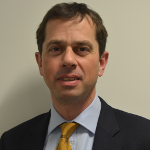
Aidan Fowler was a consultant colorectal surgeon in Gloucestershire for ten years before entering the NHS Leadership Academy Fast Track Executive Training Programme last year. Aidan is currently working as an executive at University Hospitals Bristol, trained as an Improvement Adviser with the IHI in Boston and was IA to the South West Safer Patient Programme. He currently works as faculty with the IHI particularly in the peri-operative safety domain.
When you talk to people in quality improvement, their journey often started with an event, an epiphany of sorts. So it was with my journey. I had been a colorectal consultant for several years when in 2007 C. diff became a really big problem. Here was a disease that we learned about at medical school as something of a piece of history that was once again causing morbidity and mortality, almost from nowhere.
I carried out a major operation for cancer on an elderly patient and then she came back for a stoma closure having done really well. This was supposed to be the minor bit. She had a single prophylactic dose of antibiotics and post operatively developed diarrhoea – you can almost see the rest of the story playing out: decision to perform a colectomy, worried and scared relatives, ITU placement and their feeling she would not survive surgery, deterioration and death. My initial reaction was to complain, point fingers, be angry – but what did that achieve? Typical of a surgeon you might say; my patient had died in “their” hospital because someone had not created a safe environment.
Then someone asked, “Why don’t you help?” We worked on antibiotic stewardship, hard fought, we cohorted, we used hydrogen peroxide atomisers, and the rate of C. diff fell dramatically. What had been the monthly rate became the annual rate and then fell further. We stopped doing colectomies as there was no need.
This was the power of QI. This was what happened when you moved up a level and looked at the bigger picture without ever forgetting each individual. No-one was thanking us for saving their life, they didn’t know we had, but this work had done exactly that.
What came next was a search for knowledge in the field, a spell with NHSII, and then finding the IHI and going through their Improvement Advisor Professional Development Course. This gave me the knowledge to apply to a large, multi-provider collaborative in the South West which achieved a significant reduction in HSMR for the region. There are many things one learns on a journey like this, but I am very struck by the shifting of the norms. As I contemplate a talk to a Scottish group in a meeting about out of hospital cardiac arrest (which is not at all an area I understand) and what I should say to them, I think this norm shifting is key.
So what do I mean? Well, we used to think central Line infection was an unavoidable norm, get used to it, it happens. Even so, for three months on the South West programme no acute provider in the region recorded one in their critical care unit. This stopped us from thinking that it just happens and started us thinking about how this should not and need not happen anymore; a dramatic culture change that meant our whole approach changed.
The safest hospitals in the world have huge knowledge, great and usually tenacious leadership, and values and vision. But they also have the ability to think in different ways and not let current reality get in the way of future possibility; the problems of today do not have to be the same tomorrow. Things we thought impossible a few years ago are happening now. Have the courage to challenge and think differently, and keep it simple – what do you want done to you and yours when experiencing healthcare. Now go and make that a reality for everyone.

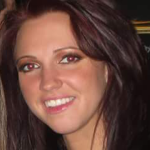
 The data gathering had begun, and so had a new phase of learning. This was the practical problem phase (PPP). Though able to take a patient list on MS Word from 0-60 in under 5 seconds, even our technical skillset was challenged by the complexities surrounding the creation of a trust-wide smartphone app. For the notes group, financial restrictions and economical sustainability were to become issues all too reminiscent of budgeting out those med school loans on gel pens and baked beans. Basic things such diplomatic allocation of tasks within the groups and communication between all members in sub-teams soon emerged as challenges in themselves.
The data gathering had begun, and so had a new phase of learning. This was the practical problem phase (PPP). Though able to take a patient list on MS Word from 0-60 in under 5 seconds, even our technical skillset was challenged by the complexities surrounding the creation of a trust-wide smartphone app. For the notes group, financial restrictions and economical sustainability were to become issues all too reminiscent of budgeting out those med school loans on gel pens and baked beans. Basic things such diplomatic allocation of tasks within the groups and communication between all members in sub-teams soon emerged as challenges in themselves. Yes, the success of our proposed data-gathering and initial interventions would rely at least 99.9% on our abilities to sweet-talk our multidisciplinary team colleagues and key administrative staff. Many were reluctant to engage initially, and the challenge was convincing them to give up their time for a concept that would have no immediate positive impact. Unfortunately for them they were up against expert hasslers. Six months of exposure to acute radiology has given us first hand experience of the benefits of perseverance against all odds, and an XXL helping of enthusiasm to go with it.
Yes, the success of our proposed data-gathering and initial interventions would rely at least 99.9% on our abilities to sweet-talk our multidisciplinary team colleagues and key administrative staff. Many were reluctant to engage initially, and the challenge was convincing them to give up their time for a concept that would have no immediate positive impact. Unfortunately for them they were up against expert hasslers. Six months of exposure to acute radiology has given us first hand experience of the benefits of perseverance against all odds, and an XXL helping of enthusiasm to go with it.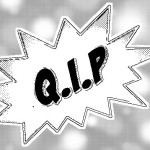 One of the best things about being an FY1, excluding consultant-funded coffees and 20% off at Nandos, is the camaraderie of it all. There’s something about strutting assertively round this shiny, world-class hospital, while secretly having minimal clue about what you’re doing, that binds you all together. Working with friends has been enjoyable, but where passions run high there will inevitably be conflict. Ever mulled over the impossibility of having lengthy debates with your mates about the structural design of folders with secondary loss of sleep? In our experience this is not only possible, but unavoidable. At such testing times, we have had to work hard as a team to avoid descent into a PMQs-esque verbal fracas. We are all developing our skills in the art of compromise, learning to balance the communication of our own opinions with the importance of listening to others. After a challenging contest so far: Obstacle-itis: 0 vs heroic QIP doctors: 1.
One of the best things about being an FY1, excluding consultant-funded coffees and 20% off at Nandos, is the camaraderie of it all. There’s something about strutting assertively round this shiny, world-class hospital, while secretly having minimal clue about what you’re doing, that binds you all together. Working with friends has been enjoyable, but where passions run high there will inevitably be conflict. Ever mulled over the impossibility of having lengthy debates with your mates about the structural design of folders with secondary loss of sleep? In our experience this is not only possible, but unavoidable. At such testing times, we have had to work hard as a team to avoid descent into a PMQs-esque verbal fracas. We are all developing our skills in the art of compromise, learning to balance the communication of our own opinions with the importance of listening to others. After a challenging contest so far: Obstacle-itis: 0 vs heroic QIP doctors: 1.
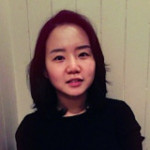
 Simply, we wanted to change the world (or at least the world according to UCLH). Much debate lead to two grand plans. The first to revolutionise the medical notes system at UCLH to make it standardised across the tower. The second was to improve the phlebotomy process to avoid wastage of both time and resources.
Simply, we wanted to change the world (or at least the world according to UCLH). Much debate lead to two grand plans. The first to revolutionise the medical notes system at UCLH to make it standardised across the tower. The second was to improve the phlebotomy process to avoid wastage of both time and resources.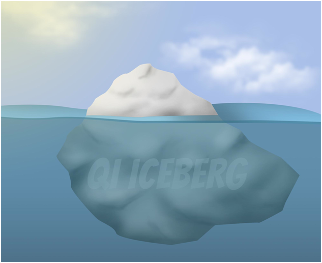 After some (mostly cordial) discussion, we decided that we would concentrate on information about blood bottles, eg what colour bottle and which lab for particular tests. This is something taken for granted by busy consultants and registrars who say, “I want an ACTH and cortisol tomorrow” without consideration of exactly what that entails. Often as an FY1 you find yourself in a position where you simply don’t know what bottle to use, and it can be a massive waste of time finding out. This is what we wanted to change. However, our intervention had to wait. We needed to do some groundwork to establish if this was a realistic project. We needed to start pestering labs and scouring the intranet to find what information was out there and see if we could use it, and make it accessible.
After some (mostly cordial) discussion, we decided that we would concentrate on information about blood bottles, eg what colour bottle and which lab for particular tests. This is something taken for granted by busy consultants and registrars who say, “I want an ACTH and cortisol tomorrow” without consideration of exactly what that entails. Often as an FY1 you find yourself in a position where you simply don’t know what bottle to use, and it can be a massive waste of time finding out. This is what we wanted to change. However, our intervention had to wait. We needed to do some groundwork to establish if this was a realistic project. We needed to start pestering labs and scouring the intranet to find what information was out there and see if we could use it, and make it accessible.